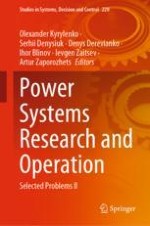The book examines the problems in the fields of power systems functioning, optimization of operating modes of electric power facilities and their control systems, information and measuring systems and metrological support in the electric power industry, ensuring the functioning of the electric power system in the conditions of a competitive market of the electric power. The book is devoted to modern problems ensuring operational reliability and safety of objects integrated power system of Ukraine in the areas such as distribution systems automation, forecasting and optimization of energy processes with solar power plants, hydropower plants and other plants, and development solutions for smart monitoring systems for DERs. The presented research results in the book allow to increase the reliability and efficiency of operation of energy facilities and ensure the stability of power systems, the introduction of effective methods and tools for forecasting electricity supply and optimize power systems taking into constraints in modern of electricity markets. The book consists of 14 chapters. The book is for researchers, engineers, as well as lecturers and postgraduates of higher education institutions dealing with problems of operation, control, diagnosis and monitoring of integrated power system, power equipment, and other.
